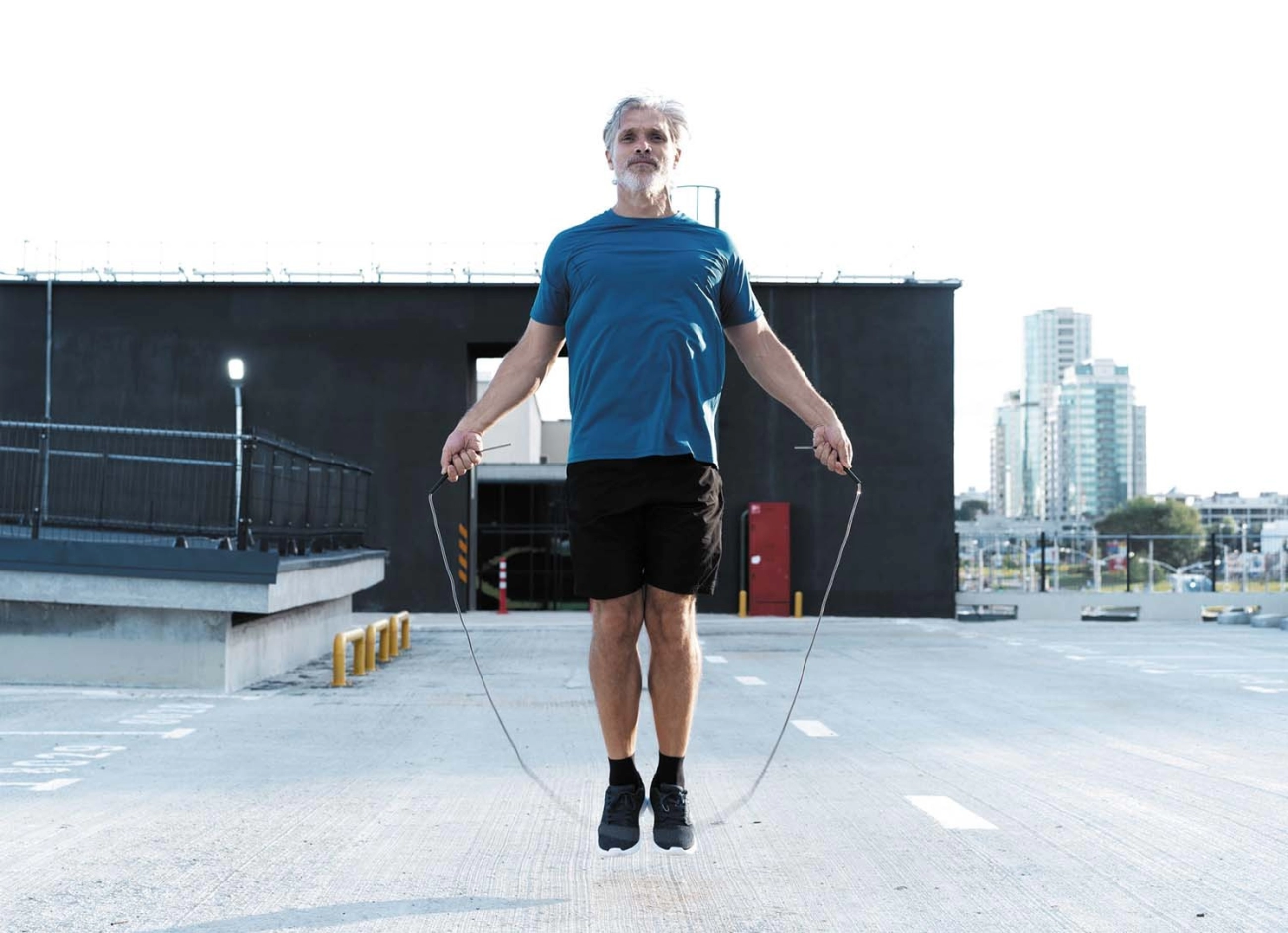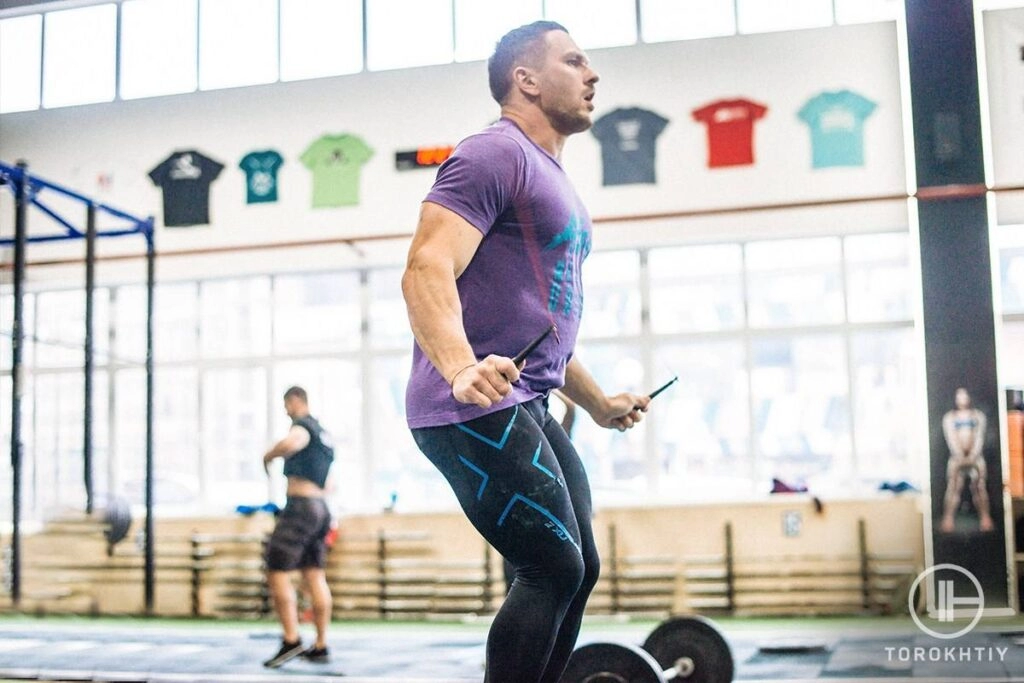What Are Plyometrics Jump Rope Training
Plyometrics is a type of explosive training designed to improve muscular power, speed, and overall athletic performance. At its core, plyometric training involves rapid stretching and contracting of muscles, boosting the efficiency of the nervous system and the muscle’s ability to generate force quickly. This makes plyometrics especially popular in sports and fitness routines focused on developing jump rope exercises for explosive power and agility.
Definition and Explanation of Plyometric Training
Plyometric exercises focus on the muscle stretch-shortening cycle (SSC), where a muscle undergoes a quick stretch (eccentric phase) followed immediately by a forceful shortening (concentric phase). This sequence enhances the muscle’s natural elastic energy and creates more powerful and explosive movements. The goal is to minimize the time between the stretch and contraction, improving reaction time, speed, and strength.
Common Examples of Plyometric Exercises
Traditional plyometric workouts include:
- Jump squats
- Box jumps
- Broad jumps
- Depth jumps
- Bounding drills
Each of these exercises emphasizes quick, explosive jumps and powerful muscular contractions, which train the body to generate force rapidly.
The Science Behind Plyometrics Muscle Stretch Shortening Cycle
The stretch-shortening cycle is key to plyometric effectiveness:
- During the eccentric phase, muscles and tendons rapidly lengthen, storing elastic energy like a spring.
- This immediate transition to the concentric phase uses that stored energy to produce a more powerful contraction than a muscle could alone.
- This cycle trains the nervous system to react quickly and muscles to deliver maximum force in minimal time.
Understanding this process helps explain why plyometric training is so effective for improving jump rope conditioning exercises focused on speed, power, and efficiency.
By incorporating this scientific foundation, plyometric exercises— including certain types of jump rope work—can dramatically enhance your athletic performance and overall functional fitness.
Is Jump Rope Considered Plyometric Training

Jump rope can definitely be considered a form of plyometric training when done with the right techniques. Plyometrics focus on quick, explosive movements that use the muscle stretch-shortening cycle to boost power and speed. Jump rope fits this bill when it involves rapid jumps and quick footwork that challenge your muscles and nervous system.
Plyometric Principles Applied to Jump Rope
Plyometrics rely on a fast stretch of muscles followed by an immediate explosive contraction. When you’re jumping rope, each landing creates a stretch in your calf muscles and tendons. The quick rebound off the ground uses the stretch-shortening cycle—the key to plyometric muscle action. This cycle helps improve power, speed, and muscle responsiveness.
Types of Jump Rope Exercises That Fit Plyometric Criteria
Not all jump rope moves are equal in plyometric benefits. Here are some examples that qualify:
- Double unders – where the rope passes twice under your feet in one jump, requiring more explosive power and faster foot speed.
- Single-leg jumps – increase intensity by forcing one leg to absorb and generate force, improving unilateral power.
- High knees with rope – promote quick, powerful lifts and enhanced coordination.
- Explosive tuck jumps over the rope – demand strong hip flexion and quick ground contact.
These moves involve fast, forceful muscle contractions characteristic of plyometric training rather than simple repetitive jumps.
Differences Between Traditional Jump Rope and Plyometric Jump Rope Training
Traditional jump rope mainly targets cardio and rhythm, focusing on consistent, steady jumps for endurance. Plyometric jump rope training is different because it pushes for:
- Explosive power through quick, high-intensity jumps.
- Reduced ground contact time, training your muscles to contract faster.
- Increased agility and coordination with more complex foot patterns.
- Higher intensity intervals rather than steady-state pacing.
In short, plyometric jump rope workouts are more about powerful bursts and speed, while traditional jump rope emphasizes stamina and steady rhythm.
Jump rope can be a powerful plyometric tool when you include explosive, fast-paced exercises designed to engage the stretch-shortening cycle. This makes it great for athletes, fitness enthusiasts, or anyone looking to improve power, coordination, and cardiovascular fitness in one simple tool.
Benefits of Jump Rope Plyometric Exercise
Jump rope plyometric workouts offer several key benefits for fitness enthusiasts, especially those looking to boost their overall athleticism and conditioning.
Cardiovascular Improvements
Jump rope plyometrics are excellent for cardio conditioning. The continuous, fast-paced movement increases your heart rate quickly, improving your cardiovascular endurance and lung capacity. Unlike many traditional cardio exercises, jump rope routines combine agility and speed, keeping your heart and lungs engaged more dynamically.
Muscle Power and Explosiveness
Plyometric jump rope exercises rely on the stretch-shortening cycle of muscles, which uses the rapid stretch and contraction of your leg muscles to develop explosive power. This training improves your ability to generate force quickly, making it ideal for sports and activities requiring bursts of speed and power. The constant rebound off the ground targets your calves, quads, glutes, and even core muscles.
Coordination and Agility Enhancements
Jump rope plyometrics demand precise timing, rhythm, and body awareness. This skill build-up leads to significantly better hand-foot coordination and agility, which can translate into improved performance in a variety of sports and daily activities. Complex jump rope drills also sharpen your neural pathways, helping you react faster and move more efficiently.
Low Impact Versus High Intensity Benefits
One of the biggest advantages of plyometric jump rope training is that it’s high intensity but low impact compared to some plyometric exercises like bounding or box jumps. Using a good quality PVC jump rope, the springy cord reduces strain on your joints by providing a smoother, controlled rebound. This balance allows you to push hard without risking excessive joint stress, making jump rope plyometrics accessible for many fitness levels.
If you’re interested in exploring more, check out our jump rope HIIT workouts for intense routines that combine cardio and plyometric benefits efficiently.
How to Incorporate Jump Rope Plyometric Training into Your Routine

Adding jump rope plyometrics to your workouts is a smart way to boost power, coordination, and cardiovascular fitness. Here’s how to get started, stay safe, and make steady progress.
Sample Plyometric Jump Rope Workouts
Start with workouts that focus on explosive movements and short bursts of high intensity. Try these beginner-friendly routines:
- Basic Plyometric Intervals:
- Jump rope at a fast pace for 30 seconds
- Rest 30 seconds
- Repeat for 5 rounds
- Explosive Jump Sets:
- Do 20 quick double-unders (two rope rotations per jump)
- Rest 45 seconds
- Repeat 4 times
- Jump Rope Ladder:
- Jump for 15 seconds, rest 15 seconds
- Jump for 30 seconds, rest 30 seconds
- Jump for 45 seconds, rest 45 seconds
- Then reverse back down the ladder
These workouts help build explosive power and improve your jump rope conditioning without overwhelming beginners.
Tips for Beginners
If you’re new to plyometric jump rope training, keep these tips in mind:
- Focus on form first: Keep your jumps low and land softly on the balls of your feet.
- Start slow: Begin with basic jumps before adding double-unders or lateral jumps.
- Stay consistent: Aim for 3 sessions per week for steady progress.
- Warm up properly: Always warm up with light jumping or dynamic stretches to prevent injury.
- Listen to your body: If you feel sharp pain or excessive fatigue, take a break.
Frequency and Progression Recommendations
To get the most from jump rope plyometrics, balance intensity and rest wisely:
- Train 2-4 times per week, allowing rest days for recovery.
- Begin with 10-15 minutes of plyometric jump rope and gradually increase time and intensity.
- Add more challenging moves like speed jumps or double-unders as your skill improves.
- Increase interval lengths or decrease rest times to boost endurance and power.
- Mix plyometric jump rope drills with other workouts for a full fitness routine.
By progressing gradually and respecting your limits, you can safely build explosive power, coordination, and better cardiovascular health using jump rope plyometrics.
Choosing the Right Jump Rope for Plyometric Training
When it comes to plyometric jump rope workouts, using the right equipment is crucial for maximizing performance and preventing injury. Not all jump ropes are built the same, especially for the demands of explosive jump rope drills and high-impact plyometric training.
Importance of Quality Jump Ropes for Plyometric Workouts
Durability and reliability are key when picking a jump rope for plyometrics. During plyometric training, you’ll be doing fast, powerful jumps that put stress on both the rope and your wrists. A cheap or low-quality rope can break easily or have unpredictable swinging speed, which disrupts your rhythm and increases injury risk.
Features of PVC Jump Ropes Ideal for Plyometrics
PVC jump ropes are a popular choice for plyometric training because they tick all the right boxes:
- Durability: PVC material handles repeated impacts and rough surfaces without fraying or breaking.
- Weight: Not too heavy, allowing fast rotations and precise timing, but with enough heft to maintain momentum during quick jumps.
- Length: Adjustable lengths ensure the rope fits your height perfectly, which is essential for efficient jumps and reducing tripping.
- Smooth Bearings: Many PVC ropes come with quality bearings that allow smoother, faster rotations—great for explosive jump rope drills.
- Grip: Comfortable, non-slip handles give you control during high-speed drills, improving coordination and minimizing wrist strain.
Why Choose PVCJumpRopecom for Your Plyometric Training Needs
At PVCJumpRope.com, we specialize in manufacturing durable, high-performance PVC jump ropes tailored for fitness and plyometric training. Here’s why we stand out:
- Custom OEM/ODM options to fit specific training styles or branding needs.
- Expert craftsmanship focused on delivering jump ropes built to withstand intense plyometric workouts.
- Wide variety of jump ropes including speed ropes, beaded ropes, and weighted options—everything you need to elevate your jump rope cardio and plyometrics.
- We understand the U.S. fitness market and offer products that meet the expectations of athletes and trainers here.
Choosing the right PVC jump rope means safer, more effective plyometric training sessions. If you want to boost your explosiveness and agility while avoiding common jump rope pitfalls, starting with quality gear from PVCJumpRope.com is the smart move.
Common Mistakes in Jump Rope Plyometrics and How to Avoid Them
Jump rope plyometric workouts are a fantastic way to boost power and agility, but like any high-intensity training, they come with risks if not done right. Let’s break down the most common mistakes people make with jump rope plyometrics and how you can steer clear of them.
Overtraining and Injury Risk
Plyometric jump rope exercises demand a lot from your muscles and joints. Overdoing it can lead to injuries like shin splints, calf strains, or knee pain. Here’s how to avoid overtraining:
- Listen to your body: If you feel persistent soreness or sharp pain, take a break.
- Build gradually: Start with shorter sessions or low-intensity jump rope cardio and plyometrics, then increase frequency and intensity slowly.
- Include rest days: Your muscles need time to recover, especially when doing explosive jump rope drills.
- Cross-train: Mix in low-impact workouts like swimming or cycling to reduce joint stress.
Poor Form with Jump Rope Plyometrics
Proper form is key to getting the most out of plyometric training while preventing injury. Common form mistakes include landing heavily on the heels, jumping too high, or stiff legs. To maintain good form:
- Keep your knees slightly bent: This helps absorb shock.
- Land softly on the balls of your feet: Minimizes joint stress.
- Use your wrists to turn the rope: Avoid excessive arm movement to maintain rhythm.
- Keep your core engaged: Supports balance and alignment.
Regularly practicing jump rope conditioning exercises with focus on technique will improve your coordination and reduce the risk of injury.
Not Warming Up Properly
Jump rope plyometric workouts are intense and demand your muscles and joints to be ready. Skipping or rushing your warm-up can increase injury risk. A proper warm-up:
- Increases blood flow: Warms muscles and prepares them for explosive movements.
- Improves flexibility: Reduces muscle tightness.
- Prepares nerves and joints for quick, repetitive motions.
Try these warm-up actions before your plyometric jump rope sessions:
- 5 minutes of light jogging or walking.
- Dynamic stretches like leg swings, ankle circles, and knee hugs.
- Slow-paced jump rope drills to get your timing right.
By avoiding these common pitfalls, your plyometric jump rope workouts become safer and more effective. Remember, quality and consistency matter more than pushing too hard too fast. With proper form, a solid warm-up, and smart training progression, you’ll enjoy the full benefits of jump rope training safely.



